12 classic paintings by Russian artists that have no place in school textbooks
By Pictolic https://pictolic.com/article/12-classic-paintings-by-russian-artists-that-have-no-place-in-school-textbooks.htmlOf all the forms of art, literature and the theater are usually engaged in exposing social vices. Artists are more likely to convey something sublime or dramatic. However, even among the classical works of fine art, there are paintings that represent society from an unseemly side. It's just that they are usually displayed in the back rooms of galleries, and certainly not included in school textbooks.
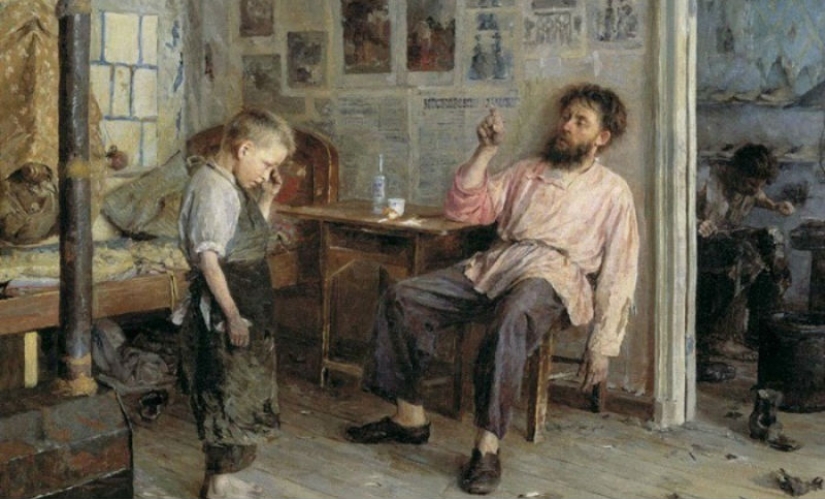
1. " The drunken father of the family»

Nikolai Kasatkin, 1897
Korzukhin became one of the first Russian artists who raised the topic of the disenfranchisement of women and children in comparison with men. Ilya Repin wrote: "The paintings of that era made the viewer blush, shudder and stare harder at themselves. Would you like to admire Korzukhin's painting: a drunken father bursts into his family in an insensible state. The children and the wife are in a panic of terror… How wild the barbarian was!»
2. " Washed down»
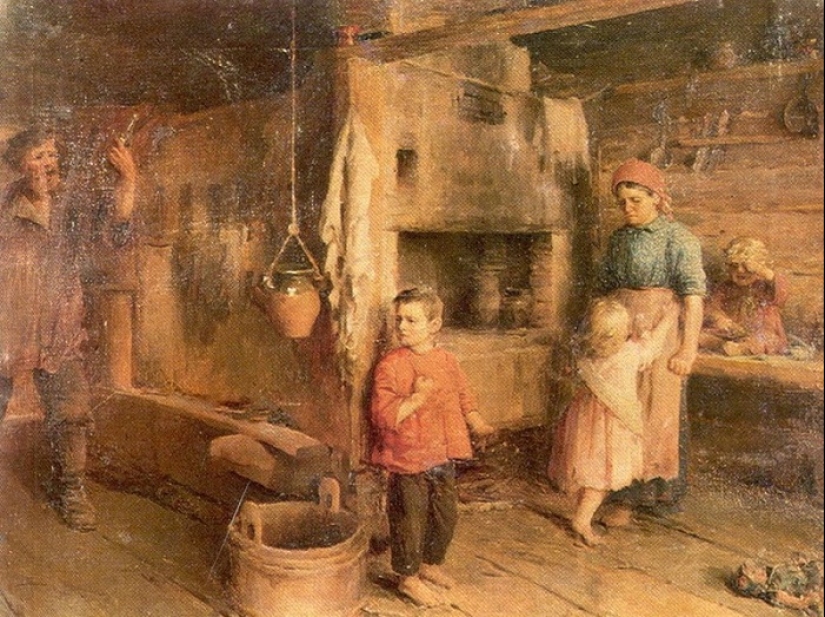
Ivan Gorokhov, late XIX-early XX centuries.
Gorokhov, who became famous for his genre paintings about rural life, could not ignore the theme of the despotic behavior of Russian peasants. In this picture, we see a drunken peasant who brought home another bottle. The eldest son clenches his fist in impotent anger, the rest of the household has already prepared for the worst.
3. " Quietly from my wife»
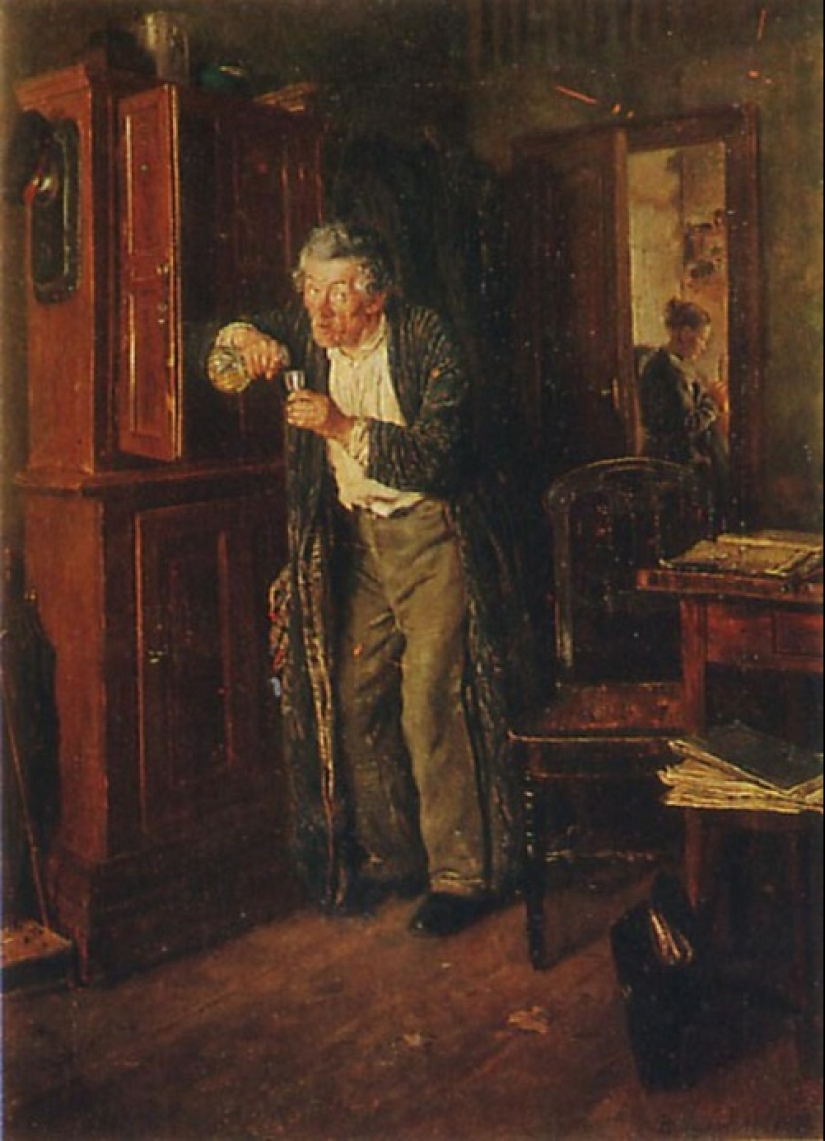
Vladimir Makovsky, 1872
There are, of course, families where the wife is in charge. Then the male habit of taking a sip of the bottle goes from riotous to shameful, but no less regular. We don't know what's worse.
4 ." Following the example of the elders»
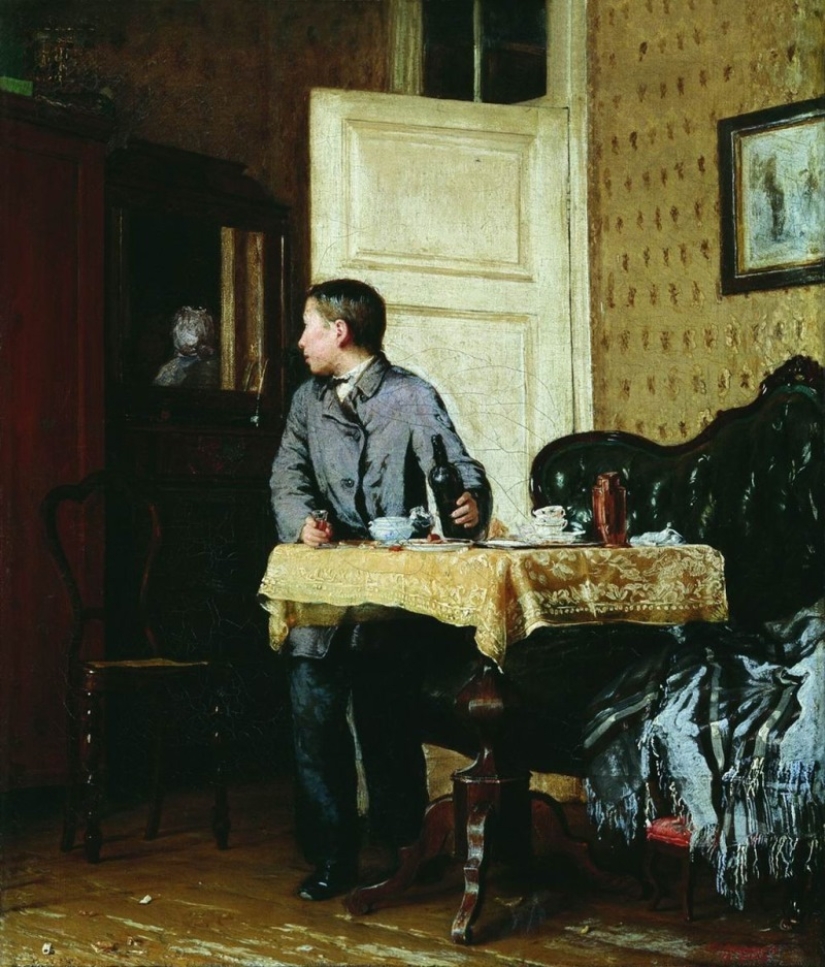
Vasily Maksimov, 1864
The youngsters, whose first facial hair had barely broken through, tried to keep up with their fathers. And, without realizing it, they gradually turned into the same drunken tyrants.
5. " Spanking»

Pavel Kovalevsky, 1880
The children were punished mercilessly for their mischief. Whips, whips, rods, and sticks were used. Even the scions of noble families were punished. Pedagogy in the XIX century was peculiar, parents believed that they were being beaten on the right path.
6. " Novichok»
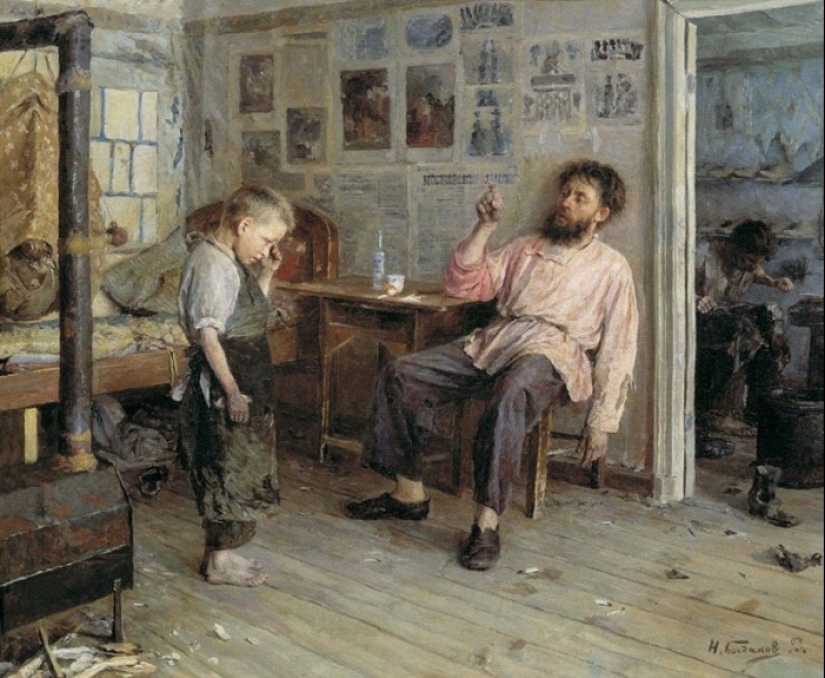
Ivan Bogdanov, 1893
In poor families, children were treated even more severely, almost like adults. From the age of three, the kids worked in the fields and around the house on an equal basis with everyone else. And teenagers were handed over as apprentices, to learn a craft. There, of course, they were also "brought up".
7. " Before punishment»
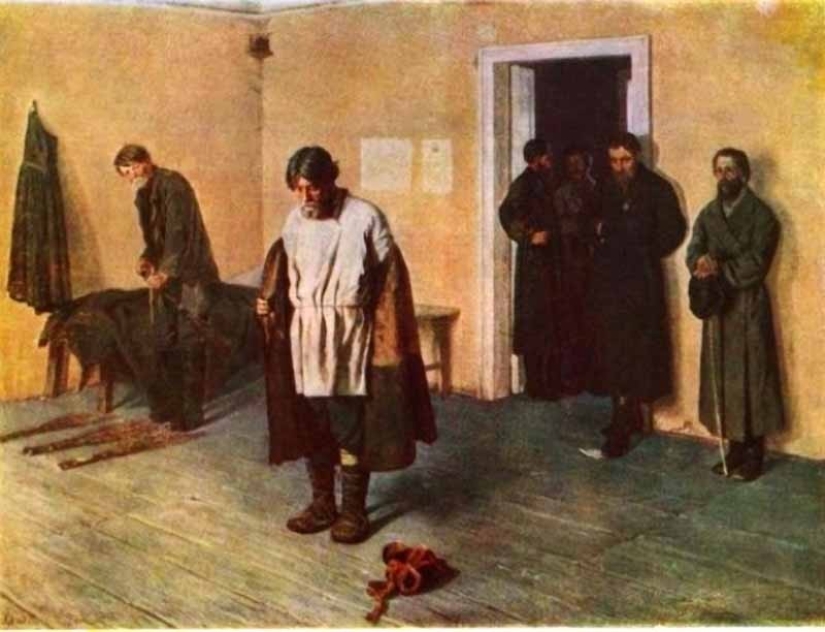
Sergey Korovin, 1884
The guilty peasants were also treated with rods. Korovin's painting depicts a scene in the volost administration. The condemned peasant pulls off a ragged zipun, and in the corner the executioner binds the last bundle of thin twigs.
8. " Merchant's Wake»
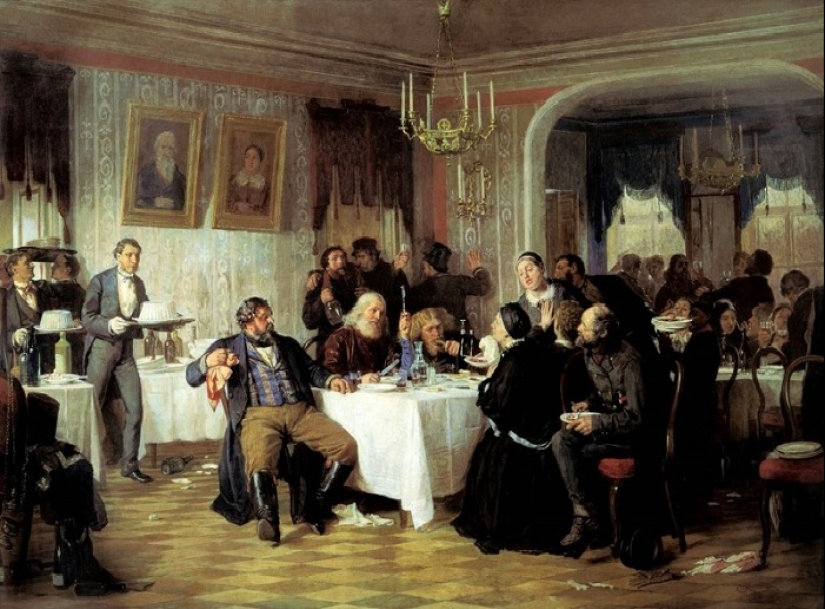
Firs Zhuravlev, 1876
Merchants — people, as a rule, not very well-mannered and educated-have forgotten what they are going to do, and seem ready to go to the dance. The mournful assembly has been turned into a hideous farce.
9. "The protodeacon proclaiming longevity at merchants' name-days»
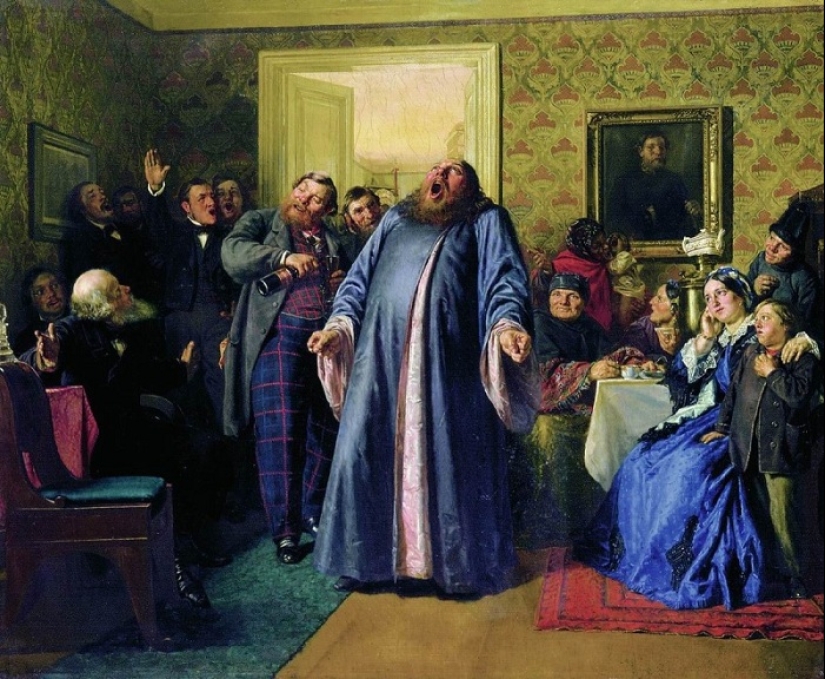
Nikolai Nevrev, 1866
The name day is a festive event, and fun is quite appropriate here. But the priest, flushed from alcohol, who is shouting something, is already beyond the limit.
10. " Consecration of a brothel»
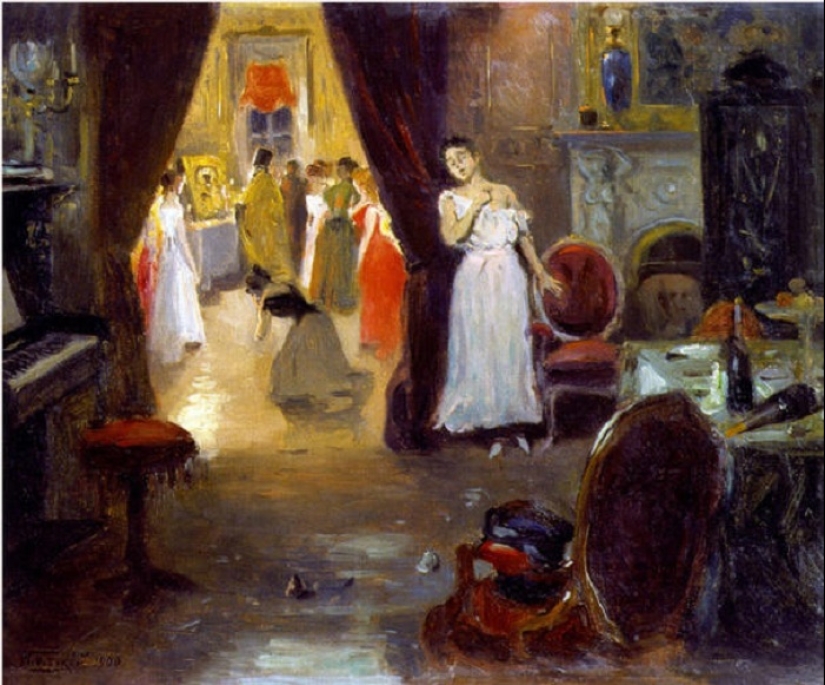
Vladimir Makovsky, 1900
The artist Makovsky went down in history as the founder of the genre of critical realism. His sketch combines completely incongruous things: a brothel as a low point of sinfulness and religion, perceived by society as the highest manifestation of spirituality.
11. " Rural procession for Easter»

Vasily Perov, 1861
The condescending attitude of the church towards drunkenness was striking. In Perov's painting, some peasants who got drunk during a religious holiday are no longer standing on their feet, and those who can still walk can barely think: a peasant in the center carries the icon upside down.
12. " The sexton explains to the peasants the picture of the Last Judgment»
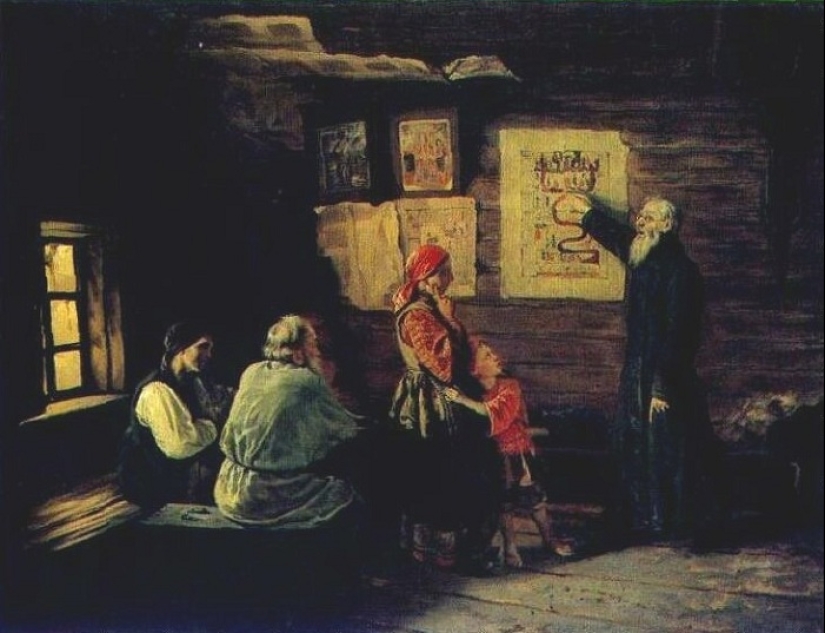
Vasily Pukirev, 1868
Instead of cultivating morality among the unenlightened people, the churchmen intimidated and oppressed the peasants with terrible thoughts about the punishments that would befall them in case of sinful behavior.
Keywords: Culture | Russian federation | Painting | Paintings | Art | Society | Drunkenness | Artists
Post News ArticleRecent articles

Without a balcony, a house is not a house, except that it is one-story and you can make a veranda there. Because there is a living ...

When we hear about a car crash test, a humanoid mannequin with colored markings on its head immediately appears in front of our ...
Related articles

Without exception, all residents of Russia, traveling to our vast country, met the strange names of towns, cities and rivers. What ...

Agnieszka Lorek prefers the mysterious thickets of Welsh forests to ordinary photo studios. She creates images of beautiful models ...

Modern art takes on very unexpected forms. French artist Thierry Mandon hangs in time and space on the walls of abandoned buildings ...

The desire to lose weight without making much effort always remains relevant. Scientists conduct many experiments to find the ...